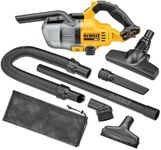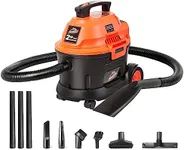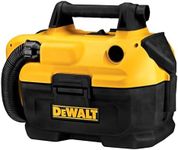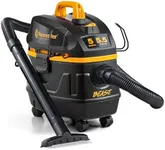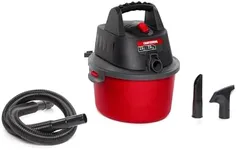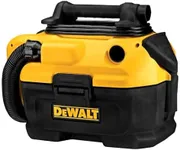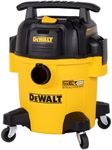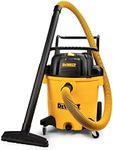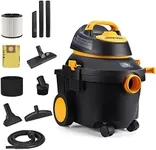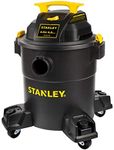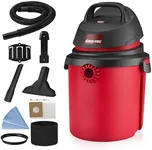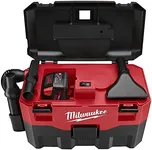Buying Guide for the Best Construction Vacuums
Choosing the right construction vacuum is crucial for maintaining a clean and safe work environment. Construction vacuums are designed to handle heavy-duty cleaning tasks, including picking up dust, debris, and even liquids. When selecting a construction vacuum, it's important to consider several key specifications to ensure it meets your specific needs. Understanding these specs will help you make an informed decision and find the best fit for your projects.PowerPower is a measure of the vacuum's suction capability, usually indicated in watts or horsepower. A higher power rating means stronger suction, which is essential for picking up heavy debris and fine dust. For light-duty tasks, a vacuum with lower power (around 1-2 horsepower) may suffice. For more demanding jobs, look for vacuums with higher power (3-5 horsepower or more). Consider the type of debris you'll be dealing with to determine the appropriate power level.
CapacityCapacity refers to the size of the vacuum's collection tank, typically measured in gallons or liters. A larger capacity means the vacuum can hold more debris before needing to be emptied, which is beneficial for large projects. Small to medium-sized tanks (5-10 gallons) are suitable for minor cleanups, while larger tanks (10-20 gallons or more) are better for extensive construction work. Choose a capacity that matches the scale of your projects to minimize interruptions for emptying the tank.
Filtration SystemThe filtration system is crucial for trapping fine dust and preventing it from being released back into the air. High-efficiency particulate air (HEPA) filters are the gold standard, capturing 99.97% of particles as small as 0.3 microns. For general construction work, a standard filter may be adequate, but for environments with hazardous dust (like asbestos or silica), a HEPA filter is essential. Consider the type of dust you'll encounter and choose a filtration system that ensures a clean and safe workspace.
DurabilityDurability refers to the vacuum's ability to withstand the rigors of a construction site. Look for vacuums made from robust materials like stainless steel or heavy-duty plastic. Features like reinforced hoses and sturdy wheels also contribute to durability. If your work environment is particularly harsh, prioritize models known for their rugged construction. Assess the typical conditions of your job sites to determine the level of durability required.
PortabilityPortability is the ease with which you can move the vacuum around the job site. This is influenced by the vacuum's weight, size, and design features like wheels and handles. Lightweight and compact models are easier to transport but may have smaller capacities. Larger models with wheels and ergonomic handles are better for extensive use but can be cumbersome. Consider how often you'll need to move the vacuum and the layout of your work areas to choose the right balance of portability and capacity.
Wet/Dry CapabilityWet/dry capability indicates whether the vacuum can handle both dry debris and liquid spills. This versatility is important for construction sites where both types of messes are common. Some vacuums are designed specifically for dry use, while others can switch between wet and dry modes. If you anticipate dealing with liquid spills, ensure the vacuum has a wet/dry feature. Evaluate the typical types of debris and spills in your work environment to decide if this capability is necessary.
